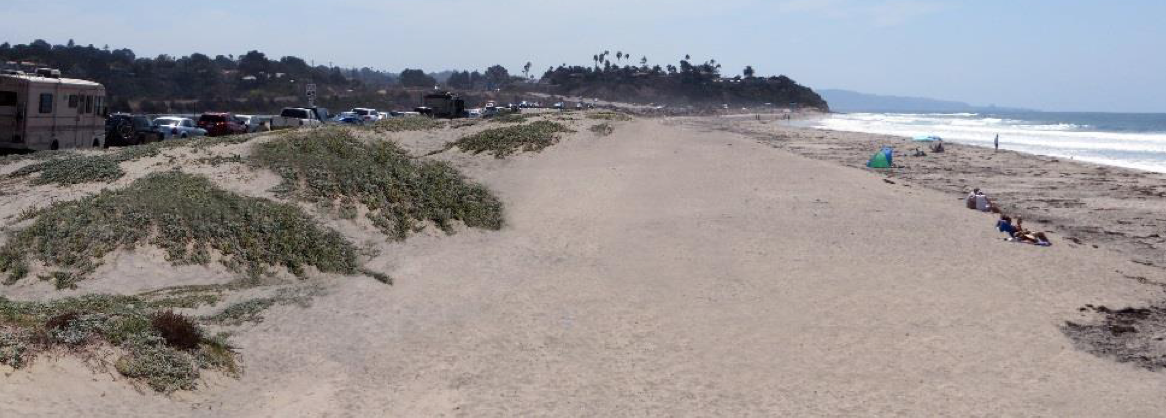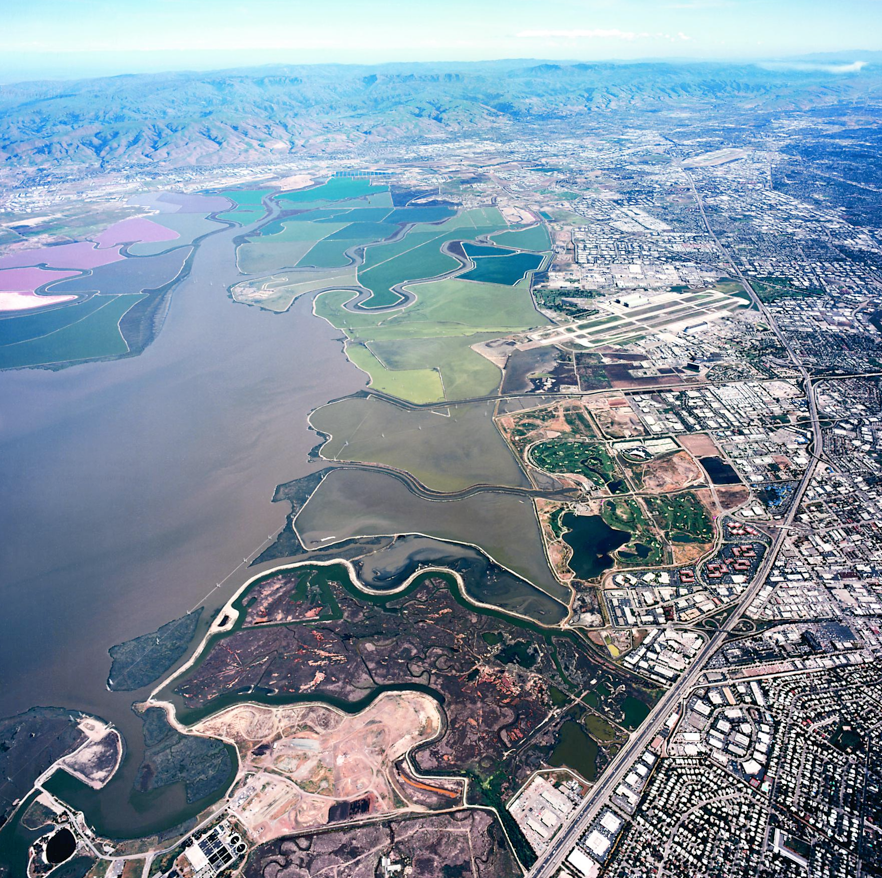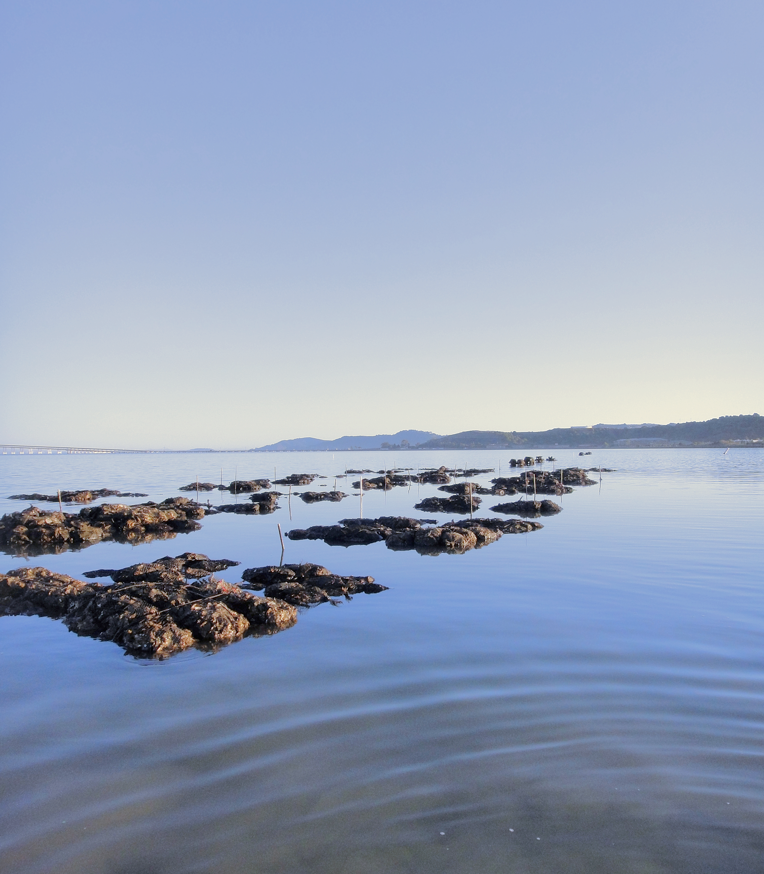A Sense of Urgency
Nature-based sea level rise adaptation is now urgent work. While California may have years before dramatic impacts are felt from rising waters, the planning, piloting, and testing of coastal resilience projects must be happening now, especially if we want to incorporate natural ecosystems. We need to dramatically accelerate the timeframes for planning and implementing coastal habitat restoration and sea level rise adaptation work if we want natural systems established before sea level rise accelerates and if we want to innovate, monitor, and apply lessons learned to future projects.
Recent scientific reports support the need to test management actions now, in order to preserve our coastal ecosystems – from wetlands around San Francisco Bay to Southern California’s iconic beaches – for their inherent values and their protective capabilities.
Projections show that if we don’t act, rising seas and greater erosion will cause the baylands to shrink. We would lose the protection these wetlands provide to our shoreline by buffering storm waves, and the cost-effectiveness of a natural infrastructure that adjusts as sea levels rise. The bay would fundamentally change, with hardened edges and little vegetation. – San Francisco Baylands Ecosystem Habitat Goals Science Update (2015).
Beaches are perhaps the most iconic feature of California, and the potential for losing this identity is real. The effect of California losing its beaches is not just a matter of affecting the tourism economy. Losing the protecting swath of beach sand between us and the pounding surf exposes critical infrastructure, businesses and homes to damage. Beaches are natural resources, and it is likely that human management efforts must increase in order to preserve them. -Sean Vitousek, in a statement in “Disappearing Beaches: Modeling Shoreline Change in Southern California”.
A recently released statewide habitat assessment by the California State Coastal Conservancy and The Nature Conservancy, “Conserving California’s Coastal Habitats: A Legacy and A Future with Sea Level Rise,” highlights the urgent need to take action to protect coastal ecosystems from the impacts of sea-level rise. The study found that 55% of current habitat by area is highly vulnerable to five feet of sea-level rise but that through concerted, coordinated, and sustained action it would be possible to conserve as much coastal habitat statewide as there is today even with five feet of sea-level rise.
Testing Projects
A common mantra among our nature-based adaptation experts is “one size does not fit all”. Nature-based adaptation is inherently innovative because one must consider unique local features, and think creatively about how to restore or install a living shoreline at a particular site. The Coastal Conservancy, as part of our Climate Ready Program, is working with many partners, including public agencies, nonprofits, and academic institutions, to plan, implement, and monitor nature-based sea level rise adaptation projects throughout California. Below we highlight innovative projects of multiple scales, habitat types, and geographies.
Coastal Dunes
One of the most valuable parts of nature-based adaptation is the multiple benefits the projects provide. The Cardiff Beach Living Shorelines Project will construct four acres of beach dunes to protect a vulnerable stretch of Highway 101 from flooding and overtopping. Cardiff Beach is narrow, with an average width of 150-200 feet, and the highway and nearby buildings are vulnerable infrastructure located close to the beach. To prevent the highway from undermining, the project team will place existing beach materials such as cobble and rip rap underneath the dunes to further protect the infrastructure. The highway may need more drastic measures in the long term, such as lifting or managed retreat, but the Cardiff Beach dunes will provide some much-needed time to develop those plans – while providing coastal dune habitat, a rare sight in Southern California today.

Further north, dune restoration requires a slightly different approach. Thousands of acres of low-lying agricultural land and wetlands in Monterey County are vulnerable to coastal flooding during winter storms. Twenty acres of coastal dunes at Salinas River State Beach could provide much-needed protection to these lands. The restoration team is removing invasive iceplant and reestablishing native dune vegetation in order to enhance the adaptive capacity of these dunes, and help the land behind them become more resilient to sea level rise and storm events.
Tidal Marshes
Tidal salt marshes along our coast are at risk of nearly disappearing within a century. In response to the threats imposed by sea level rise and habitat loss, managers at the Seal Beach National Wildlife Refuge have implemented a restoration project that is the first of its kind on the West Coast: thin-layer sediment augmentation. The marsh is surrounded by urban areas and has lost many of its historical upstream sediment sources. Managers added sediment – which came from a nearby dredging project that was searching for ways to dispose of its material – to the marsh to help it keep up with sea level rise.
In San Francisco Bay, tidal marsh restoration began decades ago, but managers and scientists continue to evolve their thinking on restoration design, based on lessons learned from previous projects and on a better understanding of the impacts of sea level rise and decreased suspended sediment concentrations in the Bay. From the adaptive management approach being applied to the restoration of thousands of acres of former commercial salt ponds in the South Bay, to the intensive monitoring of the Oro Loma horizontal levee project which uses treated wastewater, to the large-scale use of dredged material to raise elevations of the subsided Hamilton airfield prior to restoration, multiple innovative techniques for marsh restoration and coastal flood management are being implemented and monitored.

Oyster and Eelgrass
The San Francisco Bay Living Shorelines Project has developed important experimental oyster and eelgrass restoration projects which, at the time the project had started, had only existed on the East and Gulf Coasts. The bay’s pilot projects have allowed us to assess the habitats’ effectiveness in providing protection, study their ecological benefits, and explore best practices. Several projects that couple climate adaptation with oyster and eelgrass restoration have since been planned and/or implemented along our coast, including Upper Newport Bay, San Diego Bay, and Humboldt Bay.

These dune, tidal marsh, and oyster and eelgrass restoration projects highlight what we can accomplish by thinking beyond the traditional “grey” approaches to climate adaptation.
Taking Risks
“Do not fear mistakes. There are none.” – Miles Davis
Adaptation planners need to continuously bring new thinking to our planning and design work. In the San Francisco Bay Area, the Resilient by Design Challenge did just that, matching nine design teams from around the world with nine stretches of shoreline. The conceptual proposals that came out of the challenge included innovative solutions for sea level rise that incorporated housing, transportation, parks and open space, emergency response, sediment transport, ecosystem restoration, and more. The next step is implementing these concepts and evaluating what works where. The Coastal Conservancy is committed to assisting Resilient by Design with testing proposed nature-based project elements.
In order to accelerate innovative and nature-based sea level rise adaptation efforts, regulatory agencies, communities, environmental groups, and public works agencies need to increase their tolerance for risk. Projects may not meet all of their objectives and may even fail. If we want to preserve and restore our coastal natural resources and include beaches, dunes, wetlands, subtidal habitats, and other types of living shorelines in adaptation for coastal communities, we must be testing innovative solutions now. This could allow us to increase the number and scale of shoreline resilience projects up and down the California coast, incorporating appropriate measures in appropriate settings, and establishing natural systems that are able to keep pace with some sea level rise.
 |
Carrie Boyle is a California State Sea Grant fellow in the State Coastal Conservancy’s Climate Ready program. She manages the Climate Ready grant, coordinates the California Coastal Resilience Network, and supports the Conservancy’s many efforts in climate change adaptation. She received a M.S. in Applied Marine and Watershed Science from California State University Monterey Bay. |
 |
Amy Hutzel is a Deputy Executive Officer at the State Coastal Conservancy, which works to protect open space, increase public access and recreation, and restore wildlife habitats along the California Coast. She worked in the San Francisco Bay Area Program of the Coastal Conservancy for 15 years, primarily on wetland restoration projects. She has served on the boards or advisory committees of the San Francisco Bay Joint Venture, the Bay Area Open Space Council, the San Francisco Estuary Partnership, and Resilient by Design. She has a bachelor degree in urban and environmental planning from the University of Virginia. |

